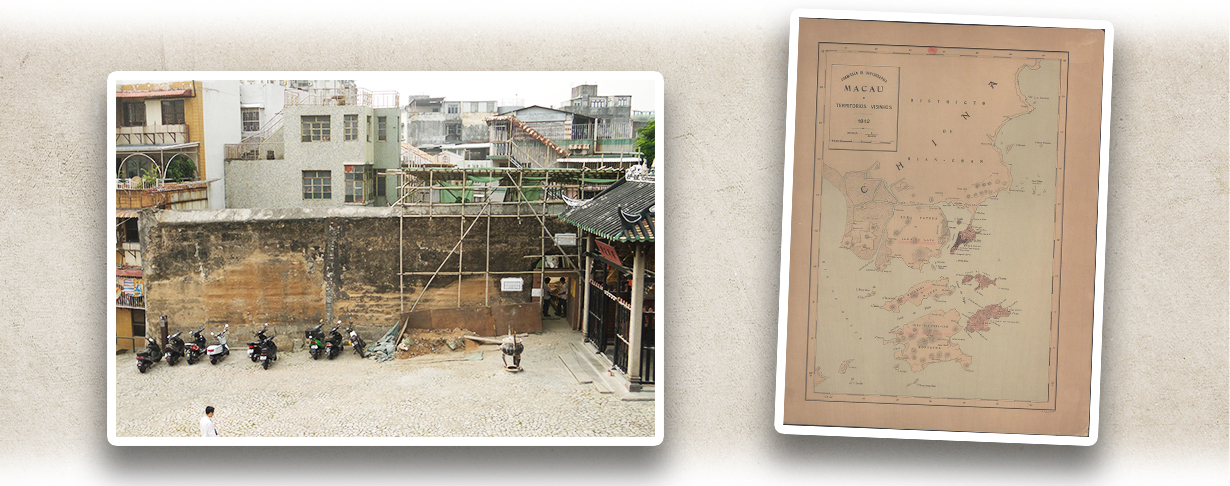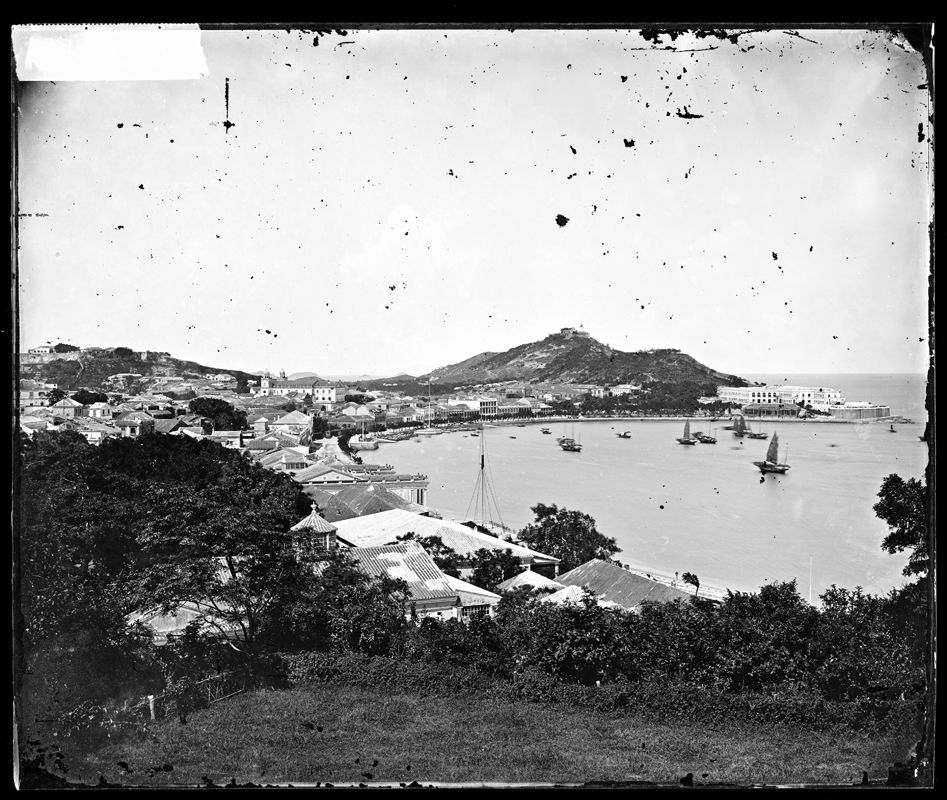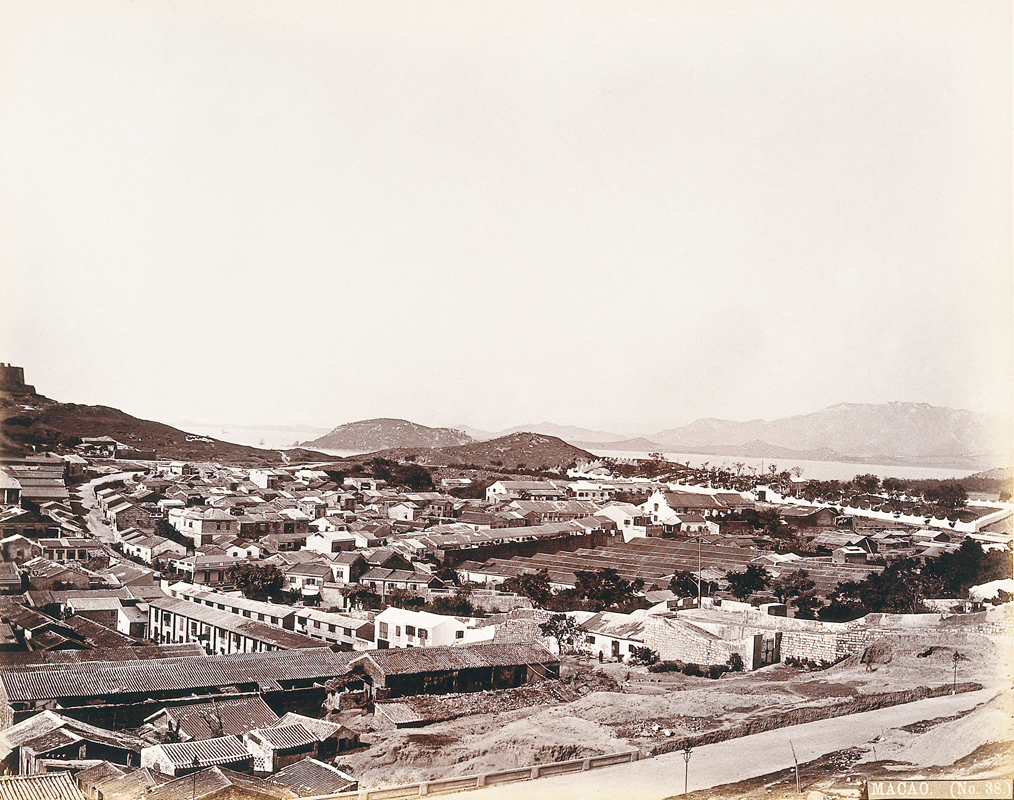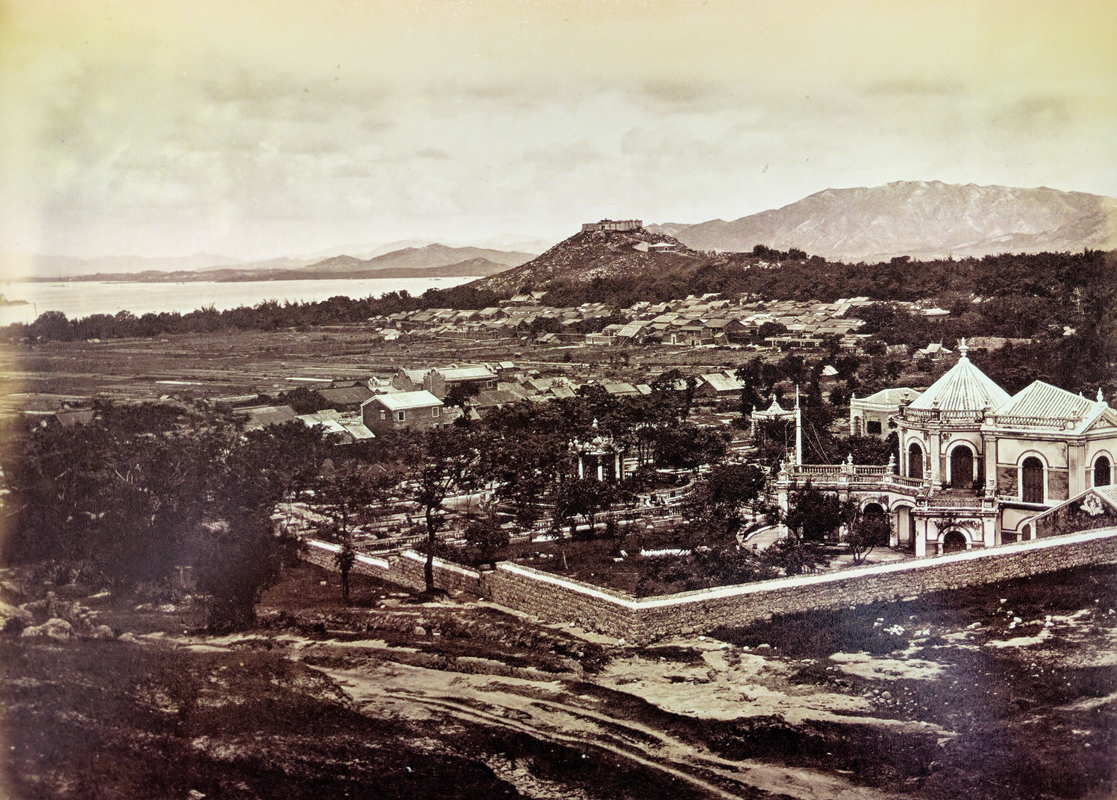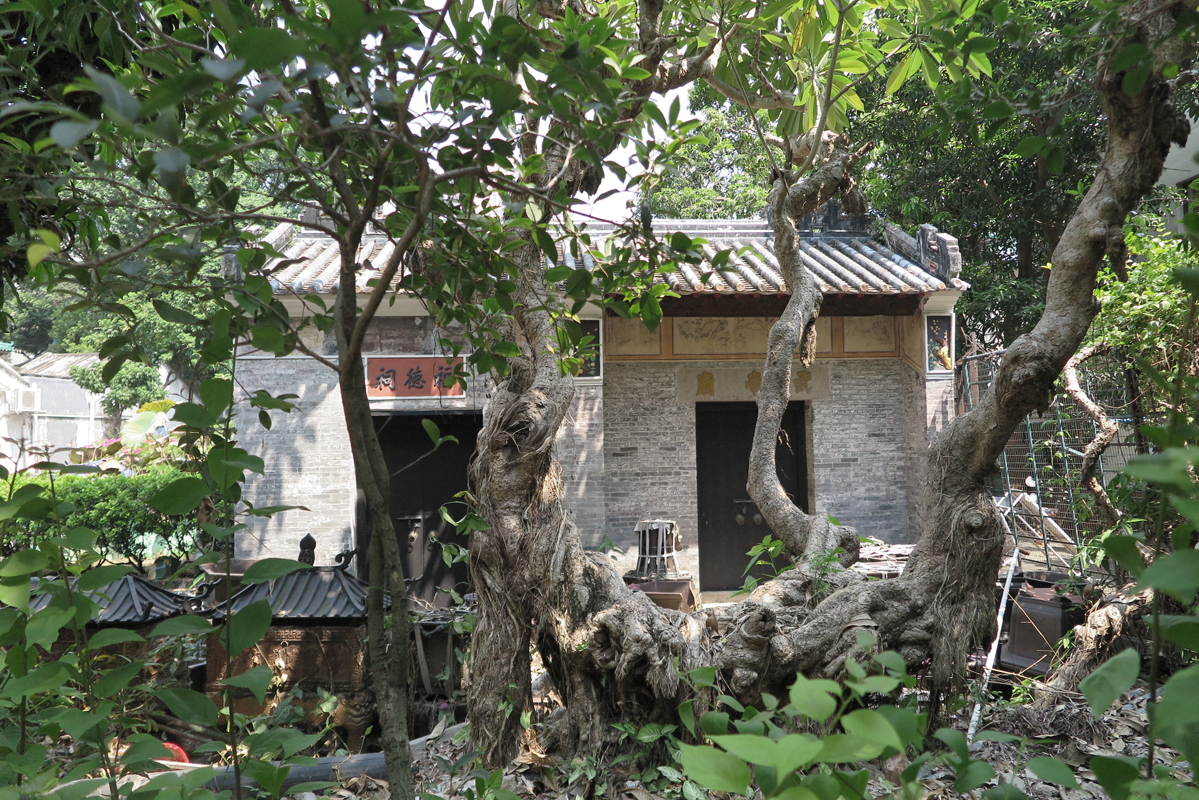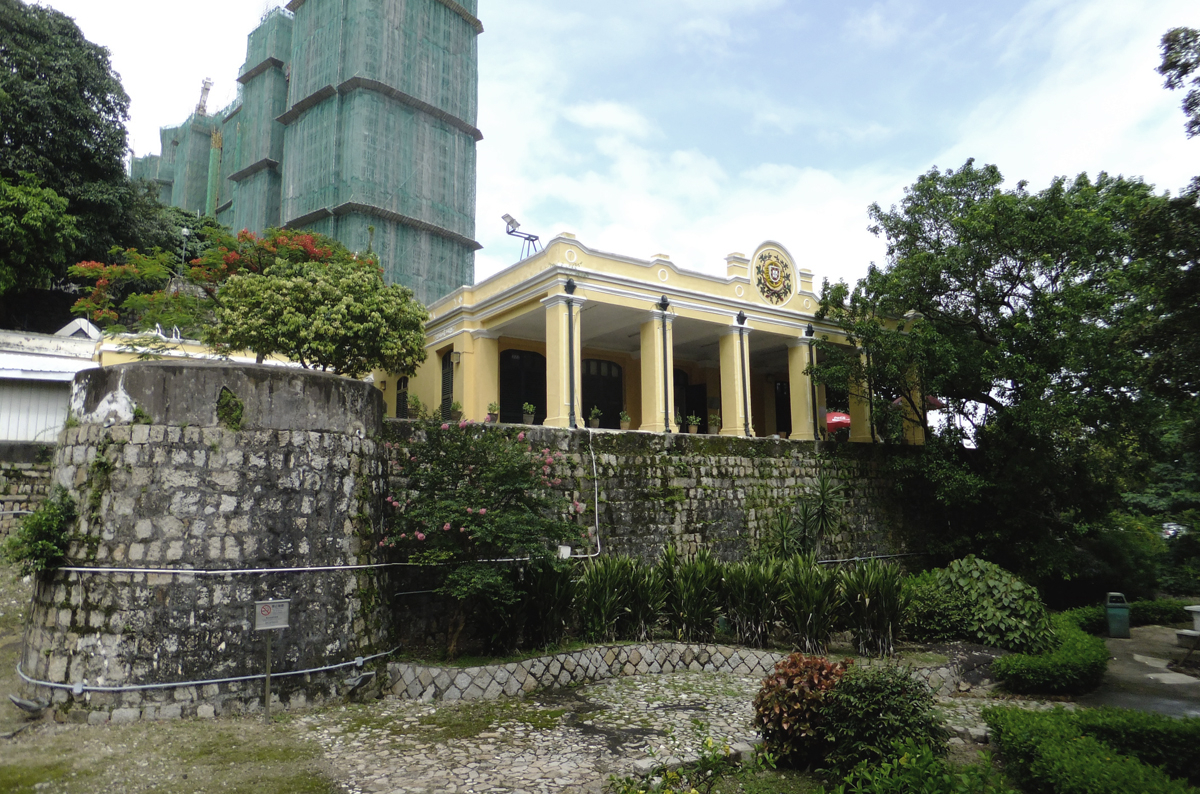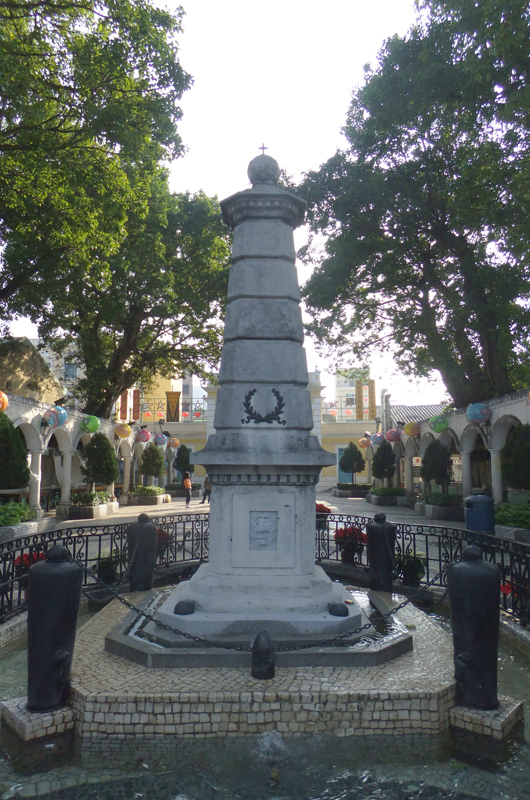The Sino-Portuguese Treaty of Peking provided the legal ground for Portuguese control over Macao (Macau) but brought about disputes over Macao’s boundaries.
As early as during Governor João Maria Ferreira do Amaral’s administration, the Portuguese started to encroach on territory beyond the Macao city. They captured Chinese villages located between Macao’s city wall and the Border Gate, including Mong-Há, Long Tin, San Kio, and Patane. The islands of Ilha Verde, Taipa, and Coloane were also occupied. The Portuguese even sent troops to the island Wanzai. Seeing the Macao Peninsula, Taipa, and Coloane falling under Portuguese control, the Qing court (清朝) maintained that Macao was marked by its city wall, but Portugal disagreed. Apart from Macao’s boundaries, the maritime boundaries also caused diplomatic controversy during the Qing’s anti-smuggling operations.
|
|
Did the two countries negotiate on Macao’s boundaries? |
|
|
See answer below. |
Left: the Macao’s city wall relics. The Portuguese built the city wall to defend the areas under their control. Later, their sphere of influence expanded outside the city wall. Right: a map of Macao in 1912, where the darker parts were Portuguese controlled areas, namely, the Macao Peninsula, Taipa, and Coloane. The Portuguese also claimed to control Wanzai, and the islands of Small and Great Hengqin (橫琴). (Photo credit: National Library of Portugal, inventory number: cota CA-88-A)
The statue of Zhang Zhidong (張之洞), the Viceroy of Liang-Guang (兩廣總督), in Seng Wong Temple. Zhang was deified for his contribution to lead the local Chinese villagers against Portuguese rule.
Praia Grande Bay in 1871.
A section of Macao’s city wall between Mount Fortress and Rua do Campo. The dwellings beyond the city wall formed the St. Lazarus’ quarter.
The St. Lazarus’ quarter in the 1870s.
The Flora Park, and two Chinese villages of Long Tin and Mong-Dak in the 1870s.
Foc Tac Temple and Mou Tai Temple now stand beside Kun Iam Temple in Mong-Dak Village. They were relocated to where they are now from Long Tin Village when it was to be demolished.
The construction of the Taipa Fortress in 1847 marked the first step of the Portuguese Macao government ’s occupation of Taipa.
A monument at Eduardo Marques Square commemorating the Portuguese Macao government’s victory against pirates in Coloane in July 1910. The incident marked the Portuguese conquest of Coloane.
It came to the Guangdong (廣東) customs officials’ attention that the Japanese steamship Tatsu Maru was running guns for Macao merchants in February 1908. The steamship was then intercepted near Coloane. However, Japan and the Portuguese Macao government purported that the steamship was sailing in Portuguese territorial waters, and requested the Qing court to release the steamship, apologise, and compensate. Robert Hart, the Inspector-General of China’s Maritime Customs Service, intervened in the incident, which ended with China accepting Japan’s demands under pressure. The Tatsumaru Incident triggered a boycott on Japanese goods in China. The Chinese people also demanded the Qing court and Portugal to demarcate Macao’s boundaries.
The Portuguese official Joaquim José Machado was commissioned to negotiate on the boundary issue with Qing representative Gao Erqian (高而謙). The negotiations took place in Hong Kong in 1909.
|
|
Did the two countries negotiate on Macao’s boundaries? |
|
|
The Sino-Portuguese Treaty of Peking was signed in 1887. The Qing court and Portugal then discussed the boundary issue in 1888, but to no avail. It was not until 1909 that the Qing court dispatched Gao Erqian, who had taken part in the Sino-French negotiation over the boundary of Yunnan Province (雲南), to negotiate with the Portuguese representative Joaquim José Machado in Hong Kong. Machado argued that Macao consisted of the Macao Peninsula, Ilha Verde, P’eng-Lim, Taipa, Coloane, Wanzai, Small Hengqin and Great Hengqin, but met with Gao’s disagreement that led to a deadlock. Machado suggested taking the matter to the Permanent Court of Arbitration in Hague, but the Qing court refused. The negotiations in Hong Kong ended on 13 November 1909. The talks later resumed in Beijing (also Peking, 北京) were in vain. Soon the Qing court met its demise before it could settle Macao’s boundary issue. |
Photo courtesy of Mr. Alex Lou, Vice Chairman of The Heritage Society, unless otherwise specified.





